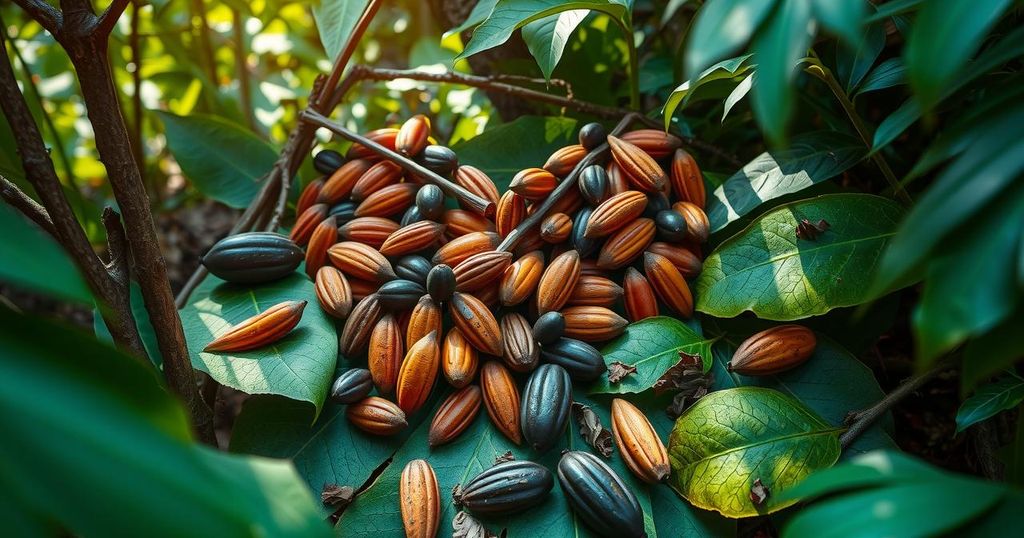The Impact of Climate Change on Valentine’s Day Chocolate

Americans are projected to spend over $27.5 billion on Valentine’s Day in 2024, heavily investing in chocolate. However, climate change is causing significant declines in cocoa production, driving prices up. Cacao trees, primarily grown in West Africa, face increasing challenges due to unpredictable weather and rising temperatures. Innovative farming practices and consumer support for ethical sourcing are vital for a sustainable chocolate future.
Each year, American consumers increase their spending on Valentine’s Day, with expenditures reaching nearly $27.5 billion in 2024. A significant portion of this spending is on chocolate, which accounts for 11.2% of holiday purchases. Notably, approximately 58 million pounds of chocolate are consumed during Valentine’s week. However, the sustainability of cocoa production is threatened by climate change, impacting chocolate supply and prices significantly.
Cacao trees predominantly flourish in tropical regions near the equator, particularly in West Africa, which produces around 70% of the world’s cocoa. Optimal growth conditions for cacao include warm temperatures, high humidity, and consistent rainfall. These requirements render cacao cultivation vulnerable to climate fluctuations, as climate change accelerates global warming and disrupts traditional farming practices.
Climate change poses severe challenges to cocoa production, leading to unpredictable weather patterns. Droughts can cause water stress while excessive rainfall promotes diseases such as fungi, threatening cacao yields. Additionally, rising temperatures increase soil moisture evaporation, thereby degrading growing conditions and potentially reducing the viability of traditional cacao-growing areas in West Africa.
Farmers are exploring innovative adaptation strategies to combat the adverse effects of climate change. Introducing drought-resistant and disease-resistant cacao varieties represents one potential solution. Other practices include agroforestry systems that cultivate cacao under shade trees to buffer temperature fluctuations, and implementing effective soil and water management techniques, including rainwater capture and precision agriculture tools.
Consumer purchasing choices can indeed promote sustainable cocoa farming practices. By seeking out products with sustainability certifications, consumers can ensure their chocolate is ethically sourced. Brands that engage in fair trade practices and support agroforestry demonstrate a commitment to environmental sustainability. It is vital for consumers to research chocolate sources and advocate for policies that protect fair trade, reforestation, and climate action.
The heightened prices of cocoa can be attributed to low yields in major producing regions such as Cote D’Ivoire and Ghana, which have experienced adverse climate conditions. Consequently, cocoa prices have surged over three hundred percent in the past two years, reflecting the compounded effects of climate-related challenges and market speculation. Given these factors, consumers should expect to pay more for chocolate this upcoming Valentine’s Day.
In summary, climate change poses significant risks to cocoa cultivation, which threatens chocolate supply and increases prices, hindering consumer access. To combat these challenges, innovative agricultural practices and informed consumer choices are essential. Support for sustainability certifications can encourage ethical chocolate sourcing, promoting resilient farming methods and fair labor standards within the cocoa industry.
Original Source: news.climate.columbia.edu







